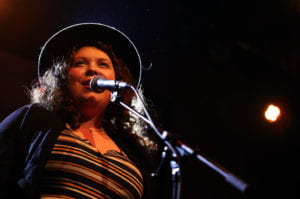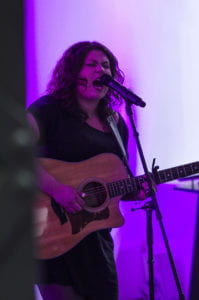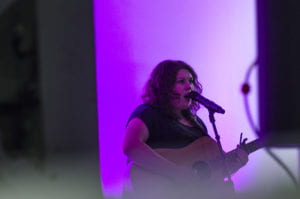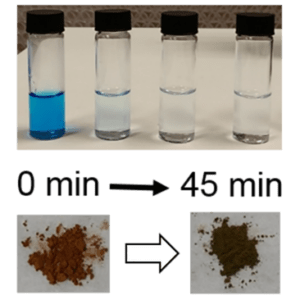 Today we are in conversation with Kate Yeager, who studied at NYU Berlin for the fall semester of 2016.
Today we are in conversation with Kate Yeager, who studied at NYU Berlin for the fall semester of 2016.
What is your school affiliation and what year are you? What is your major?
I am a student at The Clive Davis Institute of Recorded Music in Tisch majoring in Recorded Music as a Junior.
What inspired you to study in Berlin?
My program was moving to make Berlin mandatory for all students. I always wanted to study abroad in either Prague or London, so I decided this was the best fit for me as a transfer because it was giving me both the experience of studying away while maintaining my the push of my curriculum.
How was your experience? What was most inspiring, surprising, or moving about your time there? What did you find challenging?
My experience was every bit inspiring, surprising and moving. The history is what really did it for me. Every day, Germans walk on the street and are faced with their history– A constant reminder of a really troubled past and how it shaped who they are today. The ability to experiment out of this is incredible. It’s the idea that the abundance of cheap space and abandoned space gives. Like after the wall fell, everyone was on a search for interesting spaces to express themselves without judgement. “Oh there is an abandoned Nazi bunker…let’s turn it into queer night club.” Now that bunker holds the most incredible private art collection I’ve ever seen, while still maintaining its history as one can see the graffiti inside from the bunkers club era. The mentality of creation is invaluable there. It is truly priceless. It’s a constant search to make somethings and everythings and to make a place where you can loose yourself, or find yourself, or be yourself. It’s a special mentality.
It was challenging for me to do music in Berlin because of the varying genre popularity. In New York, I can pretty much go everywhere with my guitar and I and be fine. The majority of people aren’t seeking out singer-songwriters in Berlin, they’re seeking out techno, which is wholeheartedly fine. That was genre the city was built on and I am not trying to change the places I go, just try to hold hands with the places I’m with. But I did grow incredibly found of the folks I met in the open mic circuit in Berlin. I will never forget them, they have given me some of the best nights of my life.
 I understand that you are a singer-songwriter and that you developed new content while in Berlin. Did your experience studying at NYU Berlin influence this content and your work?
I understand that you are a singer-songwriter and that you developed new content while in Berlin. Did your experience studying at NYU Berlin influence this content and your work?
Absolutely. I absorbed as much as I could while I was there. Both feeling submerged in one culture and isolated from my own. It’s a polarizing feeling that contributed to a lot of creative moments. I got to experience spaces I never thought I would like attending music festivals and recording sessions at Funkhaus, to recording at Red Bull Music Studios to going to a concert at my favorite artists house since I was 12 years old. These things change you and the way you work and create. I write about people, places, and things– nouns if you will, and when all of that changes, so does all of the vocabulary around those things. So it becomes an entirely new vernacular to work with.
Were you able to perform while in Berlin? How did being there influence your development as an artist?
I was. I was truly lucky to be able to perform in Berlin. I had a couple of solo shows. I played a Sofar Sounds while I was out there and got to perform in other countries in Europe.
Well for Germany in particular, I was able to experiment more. It turned from, I am Kate the girl with an acoustic guitar to, let’s try these electronics and this effect on my instrumentation here. Let’s really see how to make this music mine. It pushes you and its accessible there. Time away makes you find a different part of yourself and your artistry.
Do you feel as though you were able to engage with Berlin’s artistic community, explore the city’s cultural landscape, and connect with local artists?
Yes and no. I was such a lucky person to as submerged as I was in the local community and cultural landscape. When I entered the open mic circuit, they truly welcomed me with open arms as they literal brought me into their homes and hearts. I drank whiskey with people from 5 different countries and a couple of locals as we talked about queerness and politics and art. We all wound up in Berlin for the creative prospects. Berlin is a hub for artistic people and being welcomed into that environment by people who have been there far longer than I have was so special.
No, because that was a very specific subculture of Berlin’s landscape. I am not an electronic artist and that is such a big part of the culture there, that I didn’t get to connect with local artists involved in that world on the same level as I did with other non-electronic musicians.
 How do you feel your experience performing complemented your academic experience at NYU Berlin?
How do you feel your experience performing complemented your academic experience at NYU Berlin?
I was really lucky that sometimes the two over lapped. I was able to perform at places like Machinenhaus and the Hamburgerbanhof because of Recorded Music performance workshops. Hamburgerbanhof is such an iconic place in Berlin and I would have never thought to play there if not for the NYU Berlin team.
Has your time studying at NYU Berlin, your experiences there, or the content you developed there informed your thinking about your future plans? If so, how?
When I was gone I travelled to over 14 cities and 10 countries. The most important take away from traveling and living that much in other areas of the world, is how vital the music culture is to me when picking a future place to live. I can’t be in a place that doesn’t embrace music. It’s so vital in locations like Berlin and Dublin, that when I go there I feel the pulse of the city through the music. I can’t really say if its effect my future plans. My google calendar only goes so far, but it definitely has and will inform my choices in the future. To be in a completely different music industry, however, made me realize how different cultures care for music. That will inform the way I carry myself back in the states always.
Is there anything else you’d like to share about your time in Berlin or while at NYU?
I grew up on a tree farm, so never in my life did I think I was going to live in Berlin. It is a time in my life where I learned a new level of creativity, responsibility, and independence and I am really excited to let that come through all the new music and projects coming up this year.















